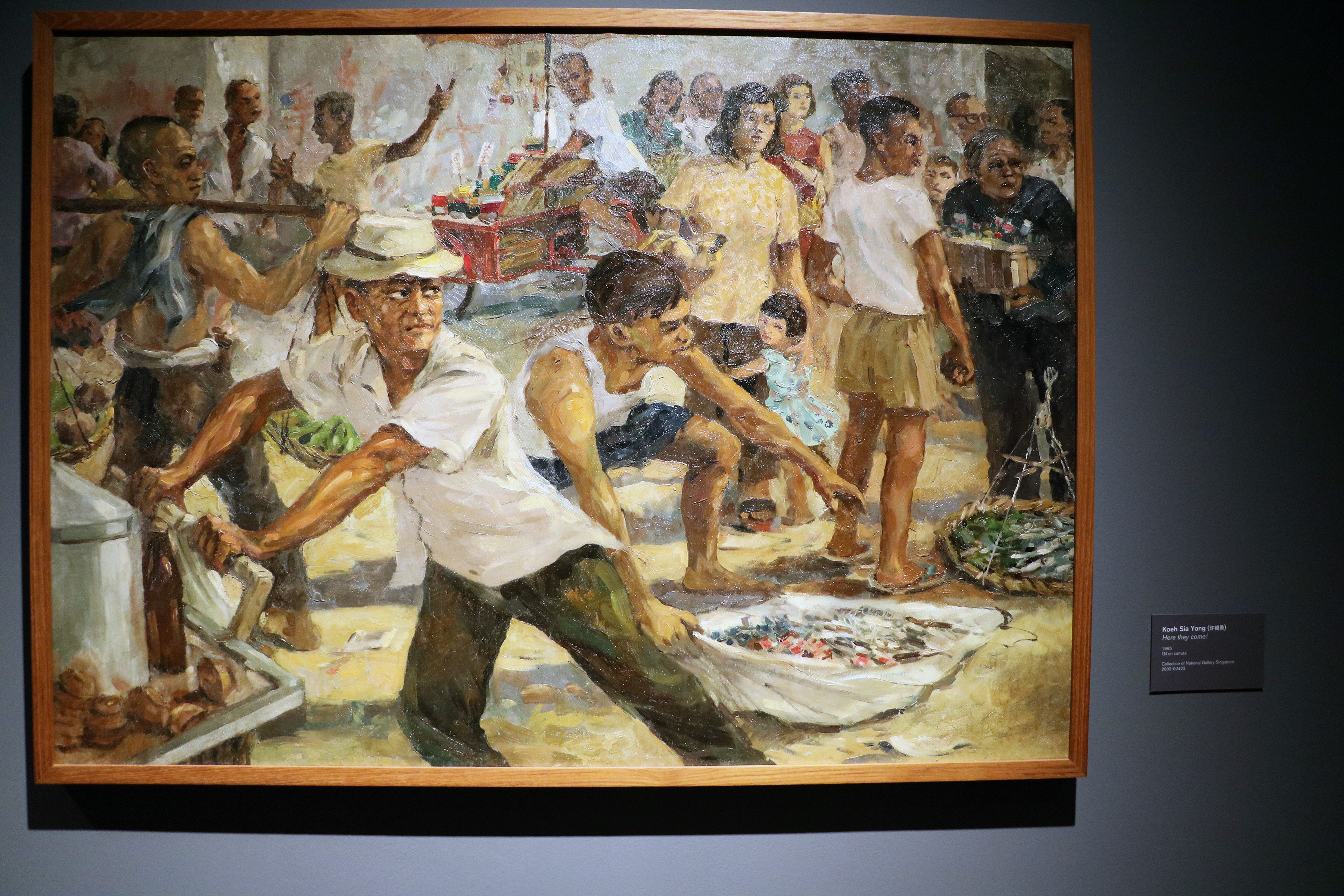
“A scene of street hawkers peddling their trades at Sago Street in the 1970s (Photo Credit: Ministry of the Environment and Water Resources (MEWR))”
Waking up in the early morning of a Saturday where the sky is still dark, Prof Kristy, Shoki and I made our way to Tanam Jurong Market on 21st Jan 2017. Singapore have a long history of hawking and Hawker Centre is intertwine as part of the history of hawking. As mentioned in Eating Together, “hawker food, traditionally, is street food”. This is due to poor living condition of immigrants at that time that make cooking near impossible. The Chinese street food was then developed to cater for them.

“Before hawker centres, street hawkers had to constantly face the wrath of di gu (National Environment Agency inspectors)”
They would form a cluster in the streets or next to a coffee shop for mutual benefits. In 1950, a Hawkers Inquiry Commission was established to look into the “problems” of street hawking. Some includes hygiene and traffic congestion, yet there is definitely a demand for cheap meals for the masses (episodically when it is just less than 10 years since WWII ended). Thus illegal hawking would persist until late 1970s.
According to Remember Singapore: “The first hawker centre, Yung Sheng Food Centre, was built in 1971 to relocate the street hawkers. It was later merged with Corporation Drive Market and Food Centre to become Taman Jurong Market & Food Centre.”
You can view the photos from our trip here: https://oss.adm.ntu.edu.sg/2016-17-ureca-kristykang/field-trip-photos/#taman
During the trip, we tried out 2 recommended dish by local celebrity food blogger and activist, Dr Leslie Tay: Bak Chor Mee and Lor Mee. We also learned that Taman Jurong Market is part of National Heritage Board’s Jurong Heritage Trail.
Of course, when it comes to the topic of Hawking, there is much to discuss. Such topic would include the reluctance of younger Singaporean to take up hawking as a profession, and the dying hawking culture. But for now, Taman Jurong Market can be considered a living museum.
Reference:
Singapore’s Vanished Markets and Hawker Centres. Remember Singapore, 27 Aug 2012. https://remembersingapore.org/2012/08/27/singapores-vanished-markets-and-hawker-centres/
OSU, A Taste of History. Overseas Singapore Unit, 18 Jul 2013: https://www.overseassingaporean.sg/articles/d/a-taste-of-history
National Heritage Board. TALES OF PIRATES, SPIES AND MORE AT THE LAUNCH OF THE JURONG HERITAGE TRAIL (Media Release), 21 Apr 2015: http://www.nhb.gov.sg/~/media/nhb/files/media/releases/new%20releases/2015-11.pdf
Taman Jurong Market & Food Centre, National Environment Agency. http://www.nea.gov.sg/public-health/hawker-centres/the-story-of-hawker-centres-upgrading-programme-(hup)/did-you-know-/taman-jurong-market-food-centre
Lim, Victoria. Taman Jurong Market and Food Centre: The Forsaken Place, Makansutra, 1 Sep 2015: http://makansutra.com/stories/3/1503/TamanJurongMarketandFoodCentreTheForsakenPlace
The Straits Times, Meaty profits. 15 Jul 2015: http://www.straitstimes.com/singapore/meaty-profits
Tan, Hsueh Yun. Hawker culture must evolve to ensure survival. The Straits Times. 4 Feb 2017. http://www.straitstimes.com/singapore/hawker-culture-must-evolve-to-ensure-survival
Channel NewsAsia. Incubation stalls, free Wi-Fi and performances: Hawker centre committee submits recommendations. 3 Feb 2017. http://www.channelnewsasia.com/news/singapore/incubation-stalls-free-wi-fi-and-performances-hawker-centre/3489508.html
Duruz, Jean; Gaik, Cheng Khoo. “Chatper 4: Growing Up Transnational” in Eating Together: Food, Space, and Identity in Malaysia and Singapore. Pg 95-122. Strategic Information and Research Development Centre (SIRD), 2015.

